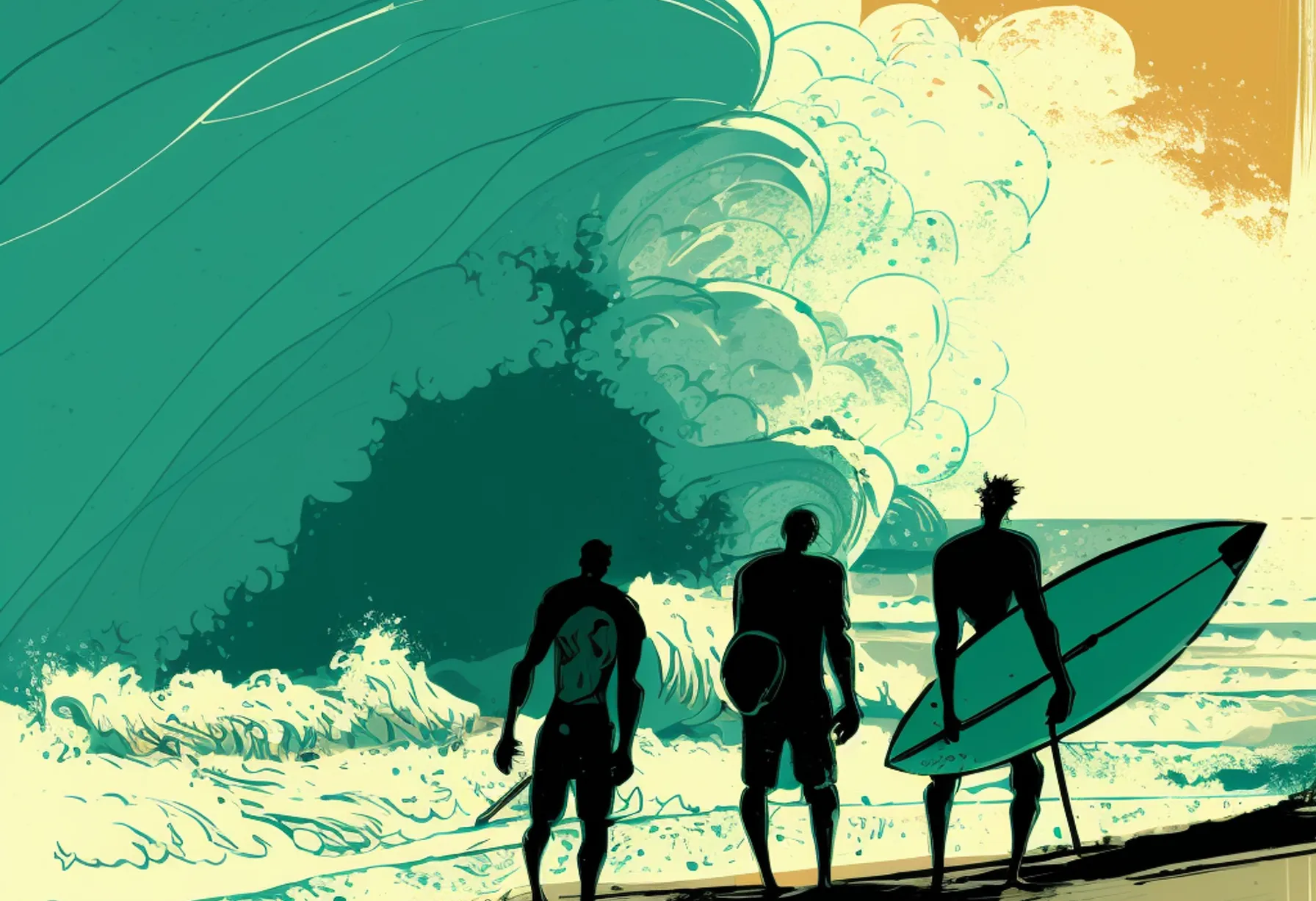A Short History of Surfing

From the Sandwich Islands to Australia
The discovery of surfing
Who are these different surfers? Retirees in search of a thrill? Entrepreneurs who have sold their startup? Outsiders who chose to keep life simple? Not at all, simply pioneers of surfing. They began to engage in a water activity: surfing. And it resonated like a philosophy, a return to the roots. What may seem peculiar when looking through the history of surfing is encountering the greats of this world: the navigator James Cook, the travel writers Jack London or Hemingway, and even the filmmaker Hitchcock.
While the British explorer James Cook, who was also a trained cartographer, first saw a surfer in 1728 in the Sandwich Islands and was fascinated. However, he did not have the leisure to note it in his logbook as he was killed shortly thereafter by natives. It was his successor, Lieutenant James King, when he visited Kealakekoua Bay, who mentioned this nautical activity.
The British explorer James Cook, also trained as a cartographer, first saw a surfer in 1728 in the Sandwich Islands and he was fascinated.
This practice dated back well before the arrival of English explorers. Indeed, in the 15th century, Hawaiian tribal chiefs would ride the waves on long boards made of precious wood while singing traditional songs. It was about proving one's bravery by tackling the waves, somewhat of a rite of passage into adulthood.
When the Americans annexed Hawaii as the 50th state, they were less admiring of the sport and simply chose to ban it on the grounds that it led to debauchery. It must be said that the surfers sailed naked on their vessels, which greatly shocked the modesty of the Mayflower descendants.
The democratization of surfing
Then it was the American Olympic champion Duke Kahanamoku, who is also memorialized with a statue in Hawaii, who promoted this sport at the beginning of the 20th century. He established the world's first surfing club. He rode on his long rides which he shaped himself and knew how to combine the aloha spirit and modernity. Also a champion in freestyle swimming, he introduced, along with the Beach Boys, the rules of good conduct for surfers that are still in force today.
On this matter, Jack London in his work The Cruise of the Snark showed interest in this little-known sport and promoted it. He loudly proclaimed the beauty of this sporting activity as well as its athletes, saying:
A royal sport. That is what it is. A royal sport for the natural king of the Earth.
In France, it wasn't until the 1950s and Peter Viertel, a screenwriter for Orson Wells who came to Biarritz on vacation, that surfing began to appear. He had his boards delivered by plane from America. It was he who introduced the French to this new discipline, and the Basque coast then took on a Californian air. The Tontons Surfeurs were born: Michel Barland: Jacky Rott... In 1959, they created the first surf club, the Waikiki surf club.
The 60s.
The 60s brought a democratization of sport, especially since the arrival of plastic components instead of the wood used until then revolutionized this sport. If Joël de Rosnay became the French surfing champion in 1960 and participated in the world championships in 1964, the Americans dominated the discipline.
Thus, Kelly Slater burst onto the screen. This icon of the jet set, who participated in the famous series Baywatch, shattered records with 11 world championship titles to his name. His speed and sense of balance made him an extraordinary surfer. Additionally, his talent challenged his competitors to exceed themselves, just like his rival and nonetheless friend Andy Irons.
In 1969, a UFO emerged from the waves. It was nicknamed the bull due to its massive musculature, was recognizable by its black and white striped shirt, feared nothing, and it took on the biggest wave of the 20th century at Makaha. It was the American Greg Noll!
70s and 80s.
During the 70s, surfers adopted a more laid-back and personal style. Such was the case with Gerry López, always on the lookout for the big wave. His particularly relaxed attitude earned him the nickname of the zen surfer. He introduced shortboards, which are predominantly used today.
The 80s were marked by the arrival of Tom Curren who followed in his father's footsteps. He had numerous world championship titles to his credit. What characterized him was his fluid and nonconformist style. His daughter Lee-Ann has also joined the competitive surfing circuit, proving that this is a lineage of surfers.
With Jérémy Flores and especially Martin Potter, a Briton and the first European to make his mark by winning the famous WTC in 1989, Europe stood out in this discipline. After which, he continued his career as a consultant with the World Surf League during the Championship Tour stages.
2000s.
The 2000s saw the arrival of Laird Hamilton. The enfant terrible was a fan of tow-in surfing. In other words, he would be towed by a boat to catch the big wave. He designed his own foilboards. Similarly, Martin Potter, another world champion of that era, made his shortboards which he even marketed.
The 60s brought about a democratization of sports, especially as the arrival of plastic components instead of the previously used wood revolutionized this sport.
If champions have left their mark on the small world of surfing, such as John Florence, this sport has inspired many women! The champion from Australia Stephanie Gilmore has clinched the 7th title of her career. In doing so, she has managed to stand out among her competitors, Alana Blanchard and Lakey Peterson.
It's the wind that makes the waves, while waiting for it to pick up, watch Endless Summer again!